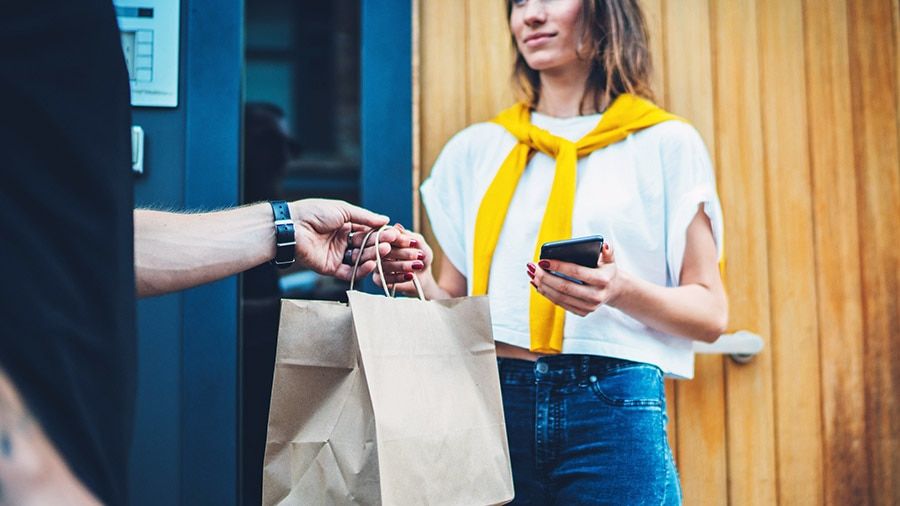The rise of food home delivery through apps like Deliveroo, Uber Eats, and DoorDash now means the people of Australia have a diverse array of options for ordering a convenient meal online. Prior to the pandemic food home delivery was already increasing. Then, the forced closures of restaurants through successive lockdowns saw the food delivery service industry grow by $2 billion in 2020 as both consumers and businesses had to adjust to the new normal.
The market size of the online food ordering and delivery industry in Australia has grown 20.6% per year on average between 2017 and 2022. This rapid growth has led to changes in the industry and changes in consumer eating habits. Which prompts the question: what has been the impact on the hospitality industry?
Impact of Covid-19
Restaurants had to pivot away from table service to offer delivery during the pandemic. Though this was a way to weather the storm and survive as businesses, it has actually had a tremendous impact on the online food delivery industry.
In the past, consumers associated takeaways with unhealthy fast food like pizza or hamburgers. Post-Covid however, with so many restaurants moving online, consumers now have a vast choice of virtually anything they want locally. This has led to healthier options like poke bowls, vegan dishes and sushi being more readily available and among the most favoured options for online customers.
At the click of a button through a convenient app, consumers can now get restaurant-quality food or even a cup of coffee from their favourite cafe delivered to their door. Even though we are no longer locked down, consumer habits have adapted and grown comfortable with increased delivery options.
Food home delivery isn’t going away any time soon, and restaurants will need to learn to live with the existence of food delivery apps. There are pros and cons to this dynamic for restaurant owners. Restaurants now have two channels through which they can service clientele. However, exorbitant commission fees from these delivery apps can put significant strain on profit margins.
How Restaurant Owners Adapt
Restaurant owners adapt in various ways to try to continue to prosper.
The Rise of “Dark Kitchens”
Many restaurateurs now opt for a different business model to the traditional restaurant setting by shifting entirely online. This means they no longer need to offer in-house seating.
A dark kitchen, also known as a cloud or ghost kitchen, is a commercial restaurant with no formal dining areas. In other words, it's making use of a kitchen facility for business purposes. By using a smaller space, business owners save on mortgage repayments, rent and utilities, offsetting the cost of commission fees.
Cutting out the Middleman
Tech-savvy restaurant owners try to circumnavigate food home delivery apps by encouraging consumers to order through their own apps or websites. Some food delivery apps charge up to 35% commission rates. Such high rates can make turning a profit almost impossible for some restaurants. Usually, the cost is passed on to the consumer.
By cutting out the middleman, restaurateurs don’t need to markup prices and don’t have to hand over money to an intermediary. However, the downside is that the restaurant risks less exposure by not appearing on these popular apps.
Food Service
Changes in consumer habits bring with them changing expectations. As consumers grow used to ordering online, we expect a certain level of food service. Restaurateurs need to think about:
- How they deliver their meals
- How they are presented
- The packaging
- The speed at which they can get meals out the door.
With the rise of environmentally conscious consumers, business owners need to offer sustainable options and avoid single-use items.
In a competitive marketplace, business owners need to consider online reviews for their food delivery service as much as the actual food itself.
Inflation Adding Pressure
The price of goods and energy costs is adding further pressure to profit margins. This, combined with delivery app fees, is putting some out of business but is also leading to innovative solutions with some restaurants growing their own produce or localising their supply chains.
Despite these efforts, many within the hospitality industry are calling on the government for more support. Industry leaders recommend wage subsidies and other initiatives to help with rising costs. They also advocate for blanket caps on the commission fees apps can charge.
What Delivery Apps Say
The line from business leaders is that food delivery apps help restaurants meet new audiences and fulfil consumer demand for convenience. They also say that they provided a solution that saved many restaurants during the pandemic, stopping them from going out of business.
However, delivery apps face many legal issues with regard to the way in which they pay food delivery drivers. There is controversy over whether drivers are employees or independent contractors.
Ultimately, both delivery apps and restaurants are trying to ensure profitability. However, the uneasy relationship is a challenge for the hospitality industry as the end consumer ends up paying a higher price
Managing Cash Flow
In a challenging time for restaurant owners, managing cash flow and checking on financial reports couldn’t be more important.
Stay on top of finances with QuickBooks accounting software that gives small business owners a holistic picture of their financial health.
With sophisticated forecasting and easy-to-grasp cash flow management, QuickBooks helps business owners prepare for the future.
Try out our innovative accounting solution with a 30-day free trial.
FAQs
How big is the food delivery industry in Australia?
In 2022, the food delivery industry in Australia is worth around $850 million.
How does the food delivery industry affect the environment?
Many restaurants still deliver food using non-sustainable packaging and with single-use plastics. This results in a net increase in the average waste per household.
Who uses food delivery apps?
Research shows that younger people are more likely to order food through food delivery apps. Gen Z and millennials each make up 37% of total food delivery customers, and this percentage goes down significantly the older the age bracket.
How much do people spend on food delivery?
In 2021, the average Australian spent $1590 on food home delivery. In Sydney, the average spend climbs over $2000.



















